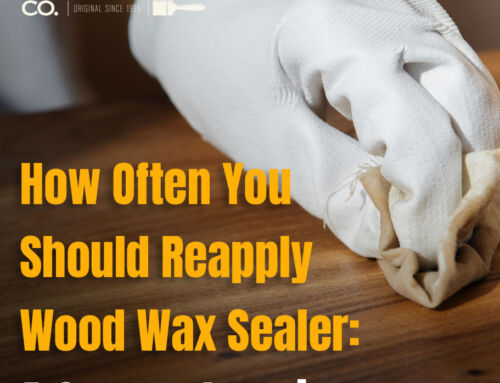This May, our color of the month is Yellow Rose. The hue is pretty, delicate and yet very versatile. Use it in your kitchen, sitting room, nursery, library, dining room or bedroom as an accent, as a central component of your overall design scheme or as a refresher to breathe new life into a tired antique or garage sale find. The warm, inviting shade of yellow is anything but in-your-face, yet it still manages to leave a lasting impression.
Our May project? A beautiful old wooden vanity the RMP team refinished to create a stunning new piece worthy of a resounding round of applause.
No Prep Work Needed
These days, everyone is strapped for time, and one of the most daunting aspects of DIY is all the prep work that’s typically involved. That’s why non toxic, water-based milk paint is so popular. It requires no strenuous preparation, so you can apply the paint directly to your work surface without spending hours toiling with a sander or stripper. If you like the ease of chalk paint, you’ll love milk paint even more.
We wanted a matte finish for our vanity project, so we went straight to applying our Yellow Rose paint. Even though the piece had retained a bit of its original clear varnish, we were able to jump right into painting, and we still saw absolutely zero peeling or blistering. Quite simply, milk paint doesn’t crack; you can paint it over almost anything, and you’ll still get a high-quality, seamless finish you can be proud of.
Technique & Tips
How easy was it to transform our vanity? Check it out:
- It only took two coats of paint — maybe three in a few trickier sections — to get complete coverage on our vanity.
- We used no extra bonding products or other products of any kind.
- No sanding. Period.
To use milk paint in your own refurbishment or DIY project, just:
- Mix your paint
- Apply 2-3 coats
- Add your hardware and/or knobs
As an optional fourth step, you can use a Finishing Cream to add a sheen that will make the underlying color pop. That extra layer of shine adds a richness as well, bringing your paint to life and contributing an attractive depth.
Milk Paint & Oil Stains
We love the multifunctionality of milk paint. That said, it’s not perfect for every circumstance, and understanding how you shouldn’t use a particular paint is key to getting the most out of your project each and every time.
There’s one thing that can derail your no-prep painting plans, and that’s an oil stain. When you’re working on a surface that has an existing oil stain, you’ll need to use a Finishing Cream to block the oil and prevent bleed-through. If you remember to do this before painting, that’s great, but if you don’t notice the bleed-through until your first coat is already on, that’s fine too. Apply the Finishing Cream, wait for it to dry, then get back to painting — it’s that easy! What’s on your workbench for May?
Get Started On Your Next DIY Project
Are you ready to get started on your next DIY project? We would love to see the end result! Submit your project online today for a chance to be featured on Real Milk Paint’s blog and social channels! We look forward to being a part of your DIY and restoration projects, and we hope you enjoy Yellow Rose as much as we do!



